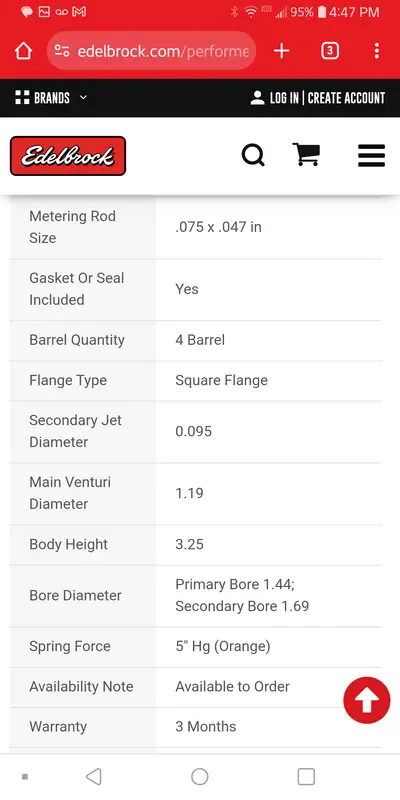No, leave mechanical advance alone for now.
Don't mess with air bleeds.
Not too expensive, but if you can, pick up a Mityvac and an A/F gauge.
Don't mess with air bleeds.
Not too expensive, but if you can, pick up a Mityvac and an A/F gauge.

No, leave mechanical advance alone for now.
Don't mess with air bleeds.
Not too expensive, but if you can, pick up a Mityvac and an A/F gauge.
Can you post the cam number? From that I can pull the cam card.
When you assembled the engine, did you clay number one? Do you know your piston to valve clearance? If you are ok there, you can try 1.6 ratio rockers on intake, will give a little more overlap, essentially about 10 degree extra duration.
What intake manifold are you using? If it's dual plane, is it notched?
Funny, i was just reading that last night.The below is a prime example of why there is so much confusion about the subject of ignition timing. Sadly this example is just one of many.
Contains a bunch of garbage and written by someone that probably never setup an engine or even, ever did a tune up.
Some how air injection is "antiquated", cruising highway speed at about 3000 rpm the throttle plates are barely open. And somehow as more air rushes into the manifold it creates pressure to move the vacuum can back to its original setting. The article further explains running leaner is cooler, and this was done because earlier engines ran "very, very hot" and could warp valves and "crack" heads. And all because vacuum advance wasn't used.
It then goes on to explain if you are running a Roots blower, to make sure you hook up the vacuum can "routed under the blower" and this is because between the carb and blower, there is "very little" vacuum when the throttle plates are closed. Yet the photo shows hooking the vacuum line to the intake manifold. Evidently they were not aware that what was "under the blower" is actually the intake manifold.
Sadly this is actually from a fairly respected source.



 thecarburetorshopmn.com
thecarburetorshopmn.com
GBodyForum is a participant in the Amazon Services LLC Associates Program, an affiliate advertising program designed to provide a means for sites to earn advertising fees by advertising and linking to amazon.com. Amazon, the Amazon logo, AmazonSupply, and the AmazonSupply logo are trademarks of Amazon.com, Inc. or its affiliates.


